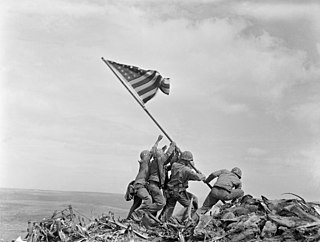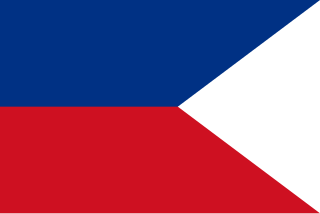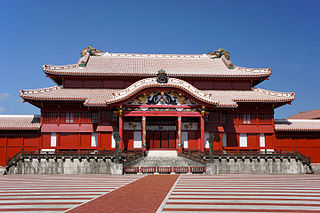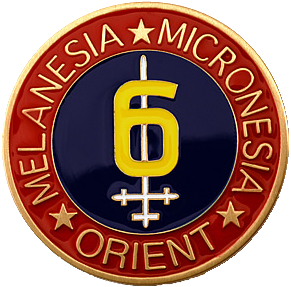External links
- The short film Intelligence and the Japanese Civilian is available for free viewing and download at the Internet Archive .
- Complete film at Google Video
| Intelligence and the Japanese Civilian | |
|---|---|
Production company | |
Release date |
|
| Country | United States |
Intelligence and the Japanese Civilian was a 1945 film produced by the US Marine Corps, to instruct Marines on how they should handle the civilian population of Japan during the post-war occupation.
The film begins by describing the difficulties the civilian population posed during the Battle of Saipan including the famous mass suicide of Japanese who believed the US would torture them. As the Marianas campaign progressed though, the Marines learned to use the Intelligence Division (ID) to handle the Japanese civilians, and by the time the Marines reached Okinawa, the ID had become a routine part of the operation. The Marianas and Okinawa, pre-war Japanese possessions, had large Japanese civilian populations at the time of their occupation, whereas other islands, like Tarawa, Guam or Iwo Jima, were either uninhabited by civilians, or only by indigenous civilians.
The ID used a variety of techniques to handle the Japanese civilians: they first made loudspeaker announcements in Japanese to coax them into surrendering; once a group surrendered they found a community leader or someone in a position of authority to make more loudspeaker broadcasts to encourage further surrenders. Camps are set up, and made self-sufficient as much as possible. Later, other roles of the civilians are explored, especially the use of captured documents and the need to find out who had been a collaborator with the militarist regime.

The Battle of Okinawa, codenamed Operation Iceberg, was a major battle of the Pacific War fought on the island of Okinawa by United States Army and United States Marine Corps forces against the Imperial Japanese Army. The initial invasion of Okinawa on 1 April 1945 was the largest amphibious assault in the Pacific Theater of World War II. The Kerama Islands surrounding Okinawa were preemptively captured on 26 March by the 77th Infantry Division. The 82-day battle lasted from 1 April until 22 June 1945. After a long campaign of island hopping, the Allies were planning to use Kadena Air Base on the large island of Okinawa as a base for Operation Downfall, the planned invasion of the Japanese home islands, 340 mi (550 km) away.
The history of Guam starts with the early arrival around 2000 BC of Austronesian people known today as the Chamorro Peoples. The Chamorus then developed a "pre-contact" society, that was colonized by the Spanish in the 17th century. The present American rule of the island began with the 1898 Spanish–American War. Guam's history of colonialism is the longest among the Pacific islands.

The Battle of Iwo Jima was a major battle in which the United States Marine Corps (USMC) and United States Navy (USN) landed on and eventually captured the island of Iwo Jima from the Imperial Japanese Army (IJA) during World War II. The American invasion, designated Operation Detachment, had the purpose of capturing the island with its two airfields: South Field and Central Field.

Japan was occupied and administered by the Allies of World War II from the surrender of the Empire of Japan on September 2, 1945, at the war's end until the Treaty of San Francisco took effect on April 28, 1952. The occupation, led by the American military with support from the British Commonwealth and under the supervision of the Far Eastern Commission, involved a total of nearly one million Allied soldiers. The occupation was overseen by the US General Douglas MacArthur, who was appointed Supreme Commander for the Allied Powers by the US President Harry S. Truman; MacArthur was succeeded as supreme commander by General Matthew Ridgway in 1951. Unlike in the occupations of Germany and Austria, the Soviet Union had little to no influence in Japan, declining to participate because it did not want to place Soviet troops under MacArthur's direct command.

Operation Downfall was the proposed Allied plan for the invasion of the Japanese home islands near the end of World War II. The planned operation was canceled when Japan surrendered following the atomic bombings of Hiroshima and Nagasaki, the Soviet declaration of war, and the invasion of Manchuria. The operation had two parts: Operation Olympic and Operation Coronet. Set to begin in November 1945, Operation Olympic was intended to capture the southern third of the southernmost main Japanese island, Kyūshū, with the recently captured island of Okinawa to be used as a staging area. In early 1946 would come Operation Coronet, the planned invasion of the Kantō Plain, near Tokyo, on the main Japanese island of Honshu. Airbases on Kyūshū captured in Operation Olympic would allow land-based air support for Operation Coronet. If Downfall had taken place, it would have been the largest amphibious operation in history, surpassing D-Day.

The Pacific War, sometimes called the Asia–Pacific War or the Pacific Theater, was the theater of World War II that was fought in eastern Asia, the Pacific Ocean, the Indian Ocean, and Oceania. It was geographically the largest theater of the war, including the Pacific Ocean theater, the South West Pacific theater, the Second Sino-Japanese War, and the Soviet–Japanese War in the last few months of the war.

This article is about the history of the Ryukyu Islands southwest of the main islands of Japan.

The 6th Marine Division was a United States Marine Corps World War II infantry division formed in September 1944. During the invasion of Okinawa it saw combat at Yae-Take and Sugar Loaf Hill and was awarded a Presidential Unit Citation. The 6th Division had also prepared for the invasion of Japan before the war ended. After the war it served in Tsingtao, China, where the division was disbanded on April 1, 1946, being the only Marine division to be formed and disbanded overseas and never set foot in the United States.

The Battle of Saipan was an amphibious assault launched by the United States against the Empire of Japan during the Pacific campaign of World War II between 15 June and 9 July 1944. The initial invasion triggered the Battle of the Philippine Sea, which effectively destroyed Japanese carrier-based airpower, and the battle resulted in the American capture of the island. Its occupation put the major cities of the Japanese home islands within the range of B-29 bombers, making them vulnerable to strategic bombing by the United States Army Air Forces. It also precipitated the resignation of Hideki Tōjō, the prime minister of Japan.

The Battle of Tinian was part of the Pacific campaign of World War II. It was fought between the United States and Japan on the island of Tinian in the Mariana Islands from 24 July until 1 August 1944. The battle saw napalm used for the first time.

During World War II, the Allies committed legally proven war crimes and violations of the laws of war against either civilians or military personnel of the Axis powers. At the end of World War II, many trials of Axis war criminals took place, most famously the Nuremberg Trials and Tokyo Trials. In Europe, these tribunals were set up under the authority of the London Charter, which only considered allegations of war crimes committed by people who acted in the interests of the Axis powers. Some war crimes involving Allied personnel were investigated by the Allied powers and led in some instances to courts-martial. Some incidents alleged by historians to have been crimes under the law of war in operation at the time were, for a variety of reasons, not investigated by the Allied powers during the war, or were investigated but not prosecuted.

Beginning in the mid-1930s, Japan conducted numerous attempts to acquire and develop weapons of mass destruction. The 1943 Battle of Changde saw Japanese use of both bioweapons and chemical weapons, and the Japanese conducted a serious, though futile, nuclear weapon program.

The Battle of Guam was an engagement during the Pacific War in World War II, and took place from 8 December to 10 December 1941 on Guam in the Mariana Islands between Japan and the United States. The American garrison was defeated by Japanese forces on 10 December, which resulted in an occupation until the Second Battle of Guam in 1944.

The Military Intelligence Service was a World War II U.S. military unit consisting of two branches, the Japanese American unit and the German-Austrian unit based at Camp Ritchie, best known as the "Ritchie Boys". The unit described here was primarily composed of Nisei who were trained as linguists. Graduates of the MIS language school (MISLS) were attached to other military units to provide translation, interpretation, and interrogation services.
The United States Armed Forces and its members have violated the law of war after the signing of the Hague Conventions of 1899 and 1907 and the signing of the Geneva Conventions. The United States prosecutes offenders through the War Crimes Act of 1996 as well as through articles in the Uniform Code of Military Justice. The United States signed the 1999 Rome Statute but it never ratified the treaty, taking the position that the International Criminal Court (ICC) lacks fundamental checks and balances. The American Service-Members' Protection Act of 2002 further limited US involvement with the ICC. The ICC reserves the right of states to prosecute war crimes, and the ICC can only proceed with prosecution of crimes when states do not have willingness or effective and reliable processes to investigate for themselves. The United States says that it has investigated many of the accusations alleged by the ICC prosecutors as having occurred in Afghanistan, and thus does not accept ICC jurisdiction over its nationals.
Allied and Japanese troops committed a number of rapes during the Battle of Okinawa during the last months of the Pacific War and the subsequent Allied occupation of Japan. The Allies occupied Japan until 1952 following the end of World War II and Okinawa Prefecture remained under US governance for two decades after.

During World War II, it was estimated that between 35,000 and 50,000 members of the Imperial Japanese Armed Forces surrendered to Allied servicemembers prior to the end of World War II in Asia in August 1945. Also, Soviet troops seized and imprisoned more than half a million Japanese troops and civilians in China and other places. The number of Japanese soldiers, sailors, marines, and airmen who surrendered was limited by the Japanese military indoctrinating its personnel to fight to the death, Allied combat personnel often being unwilling to take prisoners, and many Japanese soldiers believing that those who surrendered would be killed by their captors.

During the Japanese occupation of the islands in World War II, there was an extensive Philippine resistance movement, which opposed the Japanese and their collaborators with active underground and guerrilla activity that increased over the years. Fighting the guerrillas – apart from the Japanese regular forces – were a Japanese-formed Bureau of Constabulary, the Kenpeitai, and the Makapili. Postwar studies estimate that around 260,000 people were organized under guerrilla groups and that members of anti-Japanese underground organizations were more numerous. Such was their effectiveness that by the end of World War II, Japan controlled only twelve of the forty-eight provinces.

Operation Beleaguer was the codename for the United States Marine Corps' occupation of northeastern China's Hebei and Shandong provinces from 1945 until 1949. The Marines were tasked with overseeing the repatriation of more than 600,000 Japanese and Koreans that remained in China at the end of World War II. During the four-year occupation, American forces engaged in several skirmishes with the People's Liberation Army while successfully evacuating thousands of foreign nationals. The United States Government attempted to mediate a peace treaty between the opposing Nationalist and Communist factions but was unsuccessful. The Marines departed Northern China in June 1949 a few months before the communists won the Chinese Civil War and took control of mainland China.

Robert Bruce Sheeks was an American combat intelligence and Japanese-language officer in the United States Marine Corps Reserve who played an important role in saving the lives of Japanese, Korean and Chamorro people during the invasions of Saipan and Tinian in June–August 1944.